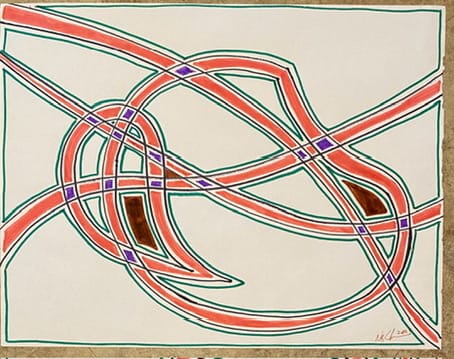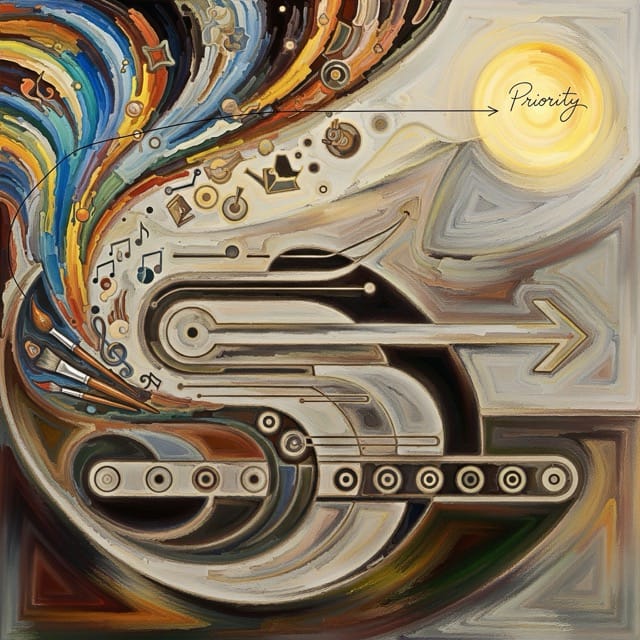The Craft of Building

Lessons from the Studio Floor
An Executive Reflection by LR Morgenstern
In the quiet hours before dawn, when the world still sleeps and the mind moves with crystalline clarity, profound insights emerge from the most unexpected places. Today I find myself contemplating the curious parallel between musical composition and organizational development, drawn from recent observations of our creative processes at Eckenrode Muziekopname.
The story begins with an ambient soundscape, born not from intention but from experimentation. What started as a fifteen-minute composition at 120 beats per minute transformed into something entirely different when the tempo was halved during mastering. In that moment of technical manipulation, space opened for massive reverbs and washed-out buses to fill the sonic landscape with decaying responses. The piece became stately, contemplative, and unexpectedly satisfying.
This creative revelation illuminates a fundamental tension in organizational design: the balance between discovery-driven innovation and intentional strategic planning. When we examine our most successful work, we often find it emerges from highly specialized, niche explorations rather than broad market appeals. The musical compositions that satisfy us most deeply may never reach massive audiences, yet they represent authentic expressions of craft mastery. Similarly, our approach to engineering the T.A.S.K.S. system has evolved through two years of experimentation, identifying objectives, recognizing bottlenecks, and automating repetitive processes. The absurdist humor is not lost on us that while perfecting these internal workflows, we continue searching for the product our corporation will ultimately offer to the world.
The question of maintaining coherent vision while scaling assistance has proven particularly instructive. Our most successful recent development was the Minor Arcana NPC generation system, where staying anchored to the main conceptual map while directing detailed technical implementation preserved both focus and functionality. The contrast became stark when attention drifted during subsequent CLI command development, leading to conceptual confusion and results that failed to meet design specifications. The lesson crystallizes: successful delegation requires unwavering commitment to the architectural overview, even when adjacent possibilities appear tantalizingly within reach.
This principle extends beyond project management into the fundamental relationship between conceptual mastery and physical execution. The gap between visualization and realization represents what we might term the "expectations gap," a subjective measure of disappointment when results fall short of mental projections. Whether working with musical composition, visual art through the 100 Days of Drawing practice, or complex system development, this gap persists regardless of skill level or experience. Some projects can subvert this limitation by embracing discovery over predetermined outcomes, though this approach serves expressive endeavors more effectively than practical implementations.
The recognition that creativity functions as craft rather than emotional expression has profound implications for business strategy. When life itself becomes a craft practice, emotion typically serves as distraction from process, except in those moments when successful execution produces results with minimal expectation gaps. This perspective cannot provide business metrics, as the expectation gap remains inherently subjective, measurable only through personal satisfaction with outcomes.
Perhaps most significantly, our framework for prioritizing foundational work over feature development reflects deep understanding of sustainable growth principles. The decision to postpone Unreal Engine capabilities in favor of completing the Morning Pages Parsing Workflow and establishing reliable Burgs Pipeline operations acknowledges that substance must precede spectacle. While flashy graphics may eventually become necessary for substantial project launches, they remain vapid without compelling narratives to support them. The world of Orbis demands complete causal consistency and immersive depth, qualities that emerge from rigorous story development rather than visual sophistication.
This philosophy extends to our broader corporate vision, where specialized expertise and niche market positioning may initially limit audience reach but ultimately creates distinctive value propositions. The process-oriented approach to creativity, where craft mastery generates its own rewards independent of emotional manipulation, suggests organizational cultures built on systematic excellence rather than inspirational rhetoric.
As we continue developing the interconnected systems that will support our creative and business objectives, these insights remind us that true innovation emerges from sustained commitment to foundational processes. The ambient soundscape that surprised its creator, the NPC generation system that succeeded through focused oversight, and the decision to prioritize narrative coherence over visual appeal all demonstrate the same principle: depth emerges from patience with process, and breakthrough innovations often result from technical experimentation within well-established frameworks.
The morning pages that capture these reflections serve not merely as documentation but as the raw material from which systematic understanding develops. In the space between conceptual vision and practical implementation, we find the territory where organizations either flourish through disciplined craft or falter through premature feature pursuit.
The path forward requires embracing both the specialized nature of our work and the systematic approach that enables sustainable development. Whether creating ambient soundscapes or building corporate infrastructure, the principles remain consistent: maintain architectural awareness, accept the expectations gap as inherent rather than problematic, and trust that foundational work creates the conditions for meaningful innovation.
In this light, our current position in the Seed lifestage represents not limitation but opportunity. The specialized, niche characteristics that might constrain mass market appeal become the foundation for distinctive expertise and authentic value creation. The craft of building, whether musical compositions or organizational systems, rewards patience, precision, and unwavering commitment to process excellence.
As we move forward, these insights will guide both creative and strategic decisions, ensuring that every technical experiment serves the larger architectural vision while remaining open to the unexpected discoveries that emerge from disciplined exploration.
Tags: #executive-reflection #creative-process #organizational-development #systems-thinking #craft-mastery #foundational-work #vision-scaling #expectations-gap #process-oriented-creativity #narrative-architecture
LR Morgenstern serves as Head of Musicology Research at Eckenrode Muziekopname, where he bridges historical and modern musicology within AI-driven initiatives. With a Ph.D. in Musicology from University of Cambridge, his expertise spans ethnomusicology, historical research, and academic publishing. Based in Prague, he leads the Musicology Research Office in exploring theoretical and cultural aspects of music while ensuring EM projects respect historical and cultural contexts in their technological innovations. His scholarly approach emphasizes culturally respectful research methodologies and the ethical integration of advanced technology with musical traditions.


